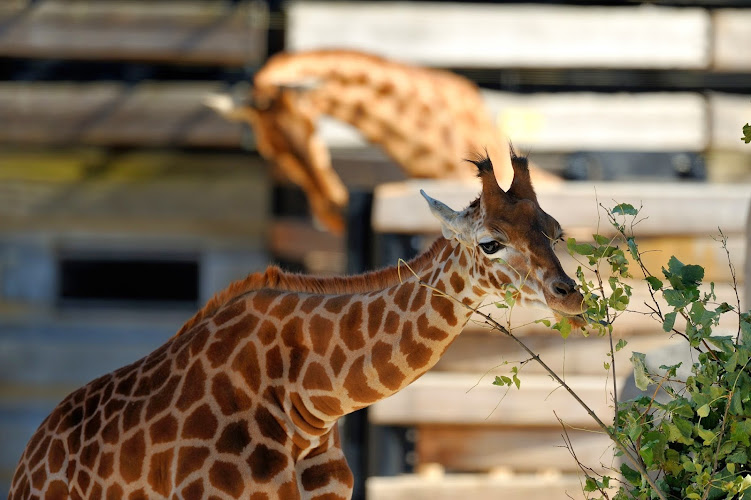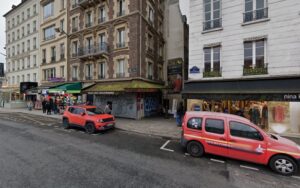
About Parc zoologique de Paris
Description
Spanning across a remarkable stretch of land in Paris's 12th arrondissement, the Parc zoologique de Paris stands as one of Europe's most innovative wildlife parks. After a massive renovation project, this zoo has completely transformed the traditional concept of animal exhibits into immersive biozones that transport visitors into authentic natural environments. What makes this place truly special is how it breaks away from conventional zoo layouts - here, the animals aren't just on display; they're living in carefully crafted ecosystems that mirror their native habitats.Key Features
• The iconic Grand Rocher - that massive 65-meter artificial rock formation that's basically become the zoo's trademark • Five distinct biozones showcasing animals from Sahel-Sudan, Europe, Patagonia, Amazon-Guyana, and Madagascar • A spectacular 2,000-square-meter aviary where visitors can watch free-flying birds, including pink flamingos and white spoonbills, from elevated wooden walkways • Dedicated spaces for endangered species conservation programs • Interactive educational exhibits and daily keeper talks • Modern visitor amenities including picnic areas, restaurants, and buggy rental services • Four kilometers of immersive walking trails • State-of-the-art veterinary facilities • Regular animal feeding demonstrations • Special seasonal events and educational programsBest Time to Visit
Spring and fall are absolutely perfect for exploring the Parc zoologique de Paris. The moderate temperatures during these seasons keep both the animals active and visitors comfortable. If you're planning a summer visit, try to arrive early in the morning when the animals are most energetic and the crowds are thinner. The zoo tends to be less crowded on weekdays, especially during school terms. Winters can be quiet and peaceful, though some animals might be less visible during particularly cold days. Feeding times vary throughout the year, so check the daily schedule when you arrive to catch these fascinating moments.How to Get There
Getting to the zoo is super straightforward using Paris's excellent public transportation system. The closest Metro station is Porte Dorée on Line 8, and from there it's just a short walk. You can also take Bus 86 or PC2, which stop right outside the zoo entrance. If you're coming from central Paris, expect about a 30-minute journey. For those driving, there's parking available nearby, but honestly, public transport is your best bet given Paris's notorious traffic and limited parking spaces.Tips for Visiting
Boy, do I wish someone had told me these things before my first visit! First off, download the zoo's smartphone app before you go - it's a lifesaver for navigating the different biozones and catching the best animal viewing times. Bring comfortable walking shoes because you'll be covering lots of ground. The zoo takes security seriously, so leave large bags at home as they're not allowed inside. Pack a water bottle and some snacks - while there are restaurants on-site, they can get pretty busy during peak times. If you're into photography, morning visits offer the best lighting conditions, and the animals tend to be more active. For families with kids, grab a rental buggy near the entrance - trust me, little legs will thank you after a few hours of exploring. During summer months, the African biozone can get pretty warm, so bring a hat and sunscreen. Rainy days actually make for interesting visits since many animals become more active - just pack an umbrella! The zoo offers guided tours, but they need to be booked in advance. And here's a pro tip: check out the Madagascar biozone during feeding times - it's absolutely fascinating watching the lemurs in action. One last thing - weekends can get pretty hectic, especially during school holidays. If you can swing a midweek visit, you'll have a much more relaxed experience. And don't rush - plan at least 3-4 hours to really soak in all the different environments and animal encounters. This isn't your average zoo visit - it's more like taking a world tour of wildlife habitats, right in the heart of Paris!Description
Spanning across a remarkable stretch of land in Paris’s 12th arrondissement, the Parc zoologique de Paris stands as one of Europe’s most innovative wildlife parks. After a massive renovation project, this zoo has completely transformed the traditional concept of animal exhibits into immersive biozones that transport visitors into authentic natural environments. What makes this place truly special is how it breaks away from conventional zoo layouts – here, the animals aren’t just on display; they’re living in carefully crafted ecosystems that mirror their native habitats.
Key Features
• The iconic Grand Rocher – that massive 65-meter artificial rock formation that’s basically become the zoo’s trademark
• Five distinct biozones showcasing animals from Sahel-Sudan, Europe, Patagonia, Amazon-Guyana, and Madagascar
• A spectacular 2,000-square-meter aviary where visitors can watch free-flying birds, including pink flamingos and white spoonbills, from elevated wooden walkways
• Dedicated spaces for endangered species conservation programs
• Interactive educational exhibits and daily keeper talks
• Modern visitor amenities including picnic areas, restaurants, and buggy rental services
• Four kilometers of immersive walking trails
• State-of-the-art veterinary facilities
• Regular animal feeding demonstrations
• Special seasonal events and educational programs
Best Time to Visit
Spring and fall are absolutely perfect for exploring the Parc zoologique de Paris. The moderate temperatures during these seasons keep both the animals active and visitors comfortable. If you’re planning a summer visit, try to arrive early in the morning when the animals are most energetic and the crowds are thinner. The zoo tends to be less crowded on weekdays, especially during school terms. Winters can be quiet and peaceful, though some animals might be less visible during particularly cold days. Feeding times vary throughout the year, so check the daily schedule when you arrive to catch these fascinating moments.
How to Get There
Getting to the zoo is super straightforward using Paris’s excellent public transportation system. The closest Metro station is Porte Dorée on Line 8, and from there it’s just a short walk. You can also take Bus 86 or PC2, which stop right outside the zoo entrance. If you’re coming from central Paris, expect about a 30-minute journey. For those driving, there’s parking available nearby, but honestly, public transport is your best bet given Paris’s notorious traffic and limited parking spaces.
Tips for Visiting
Boy, do I wish someone had told me these things before my first visit! First off, download the zoo’s smartphone app before you go – it’s a lifesaver for navigating the different biozones and catching the best animal viewing times. Bring comfortable walking shoes because you’ll be covering lots of ground. The zoo takes security seriously, so leave large bags at home as they’re not allowed inside.
Pack a water bottle and some snacks – while there are restaurants on-site, they can get pretty busy during peak times. If you’re into photography, morning visits offer the best lighting conditions, and the animals tend to be more active. For families with kids, grab a rental buggy near the entrance – trust me, little legs will thank you after a few hours of exploring.
During summer months, the African biozone can get pretty warm, so bring a hat and sunscreen. Rainy days actually make for interesting visits since many animals become more active – just pack an umbrella! The zoo offers guided tours, but they need to be booked in advance. And here’s a pro tip: check out the Madagascar biozone during feeding times – it’s absolutely fascinating watching the lemurs in action.
One last thing – weekends can get pretty hectic, especially during school holidays. If you can swing a midweek visit, you’ll have a much more relaxed experience. And don’t rush – plan at least 3-4 hours to really soak in all the different environments and animal encounters. This isn’t your average zoo visit – it’s more like taking a world tour of wildlife habitats, right in the heart of Paris!
Location
Places to Stay Near Parc zoologique de Paris
Find Tours in Paris
Explore More Travel Guides
No reviews found! Be the first to review!

